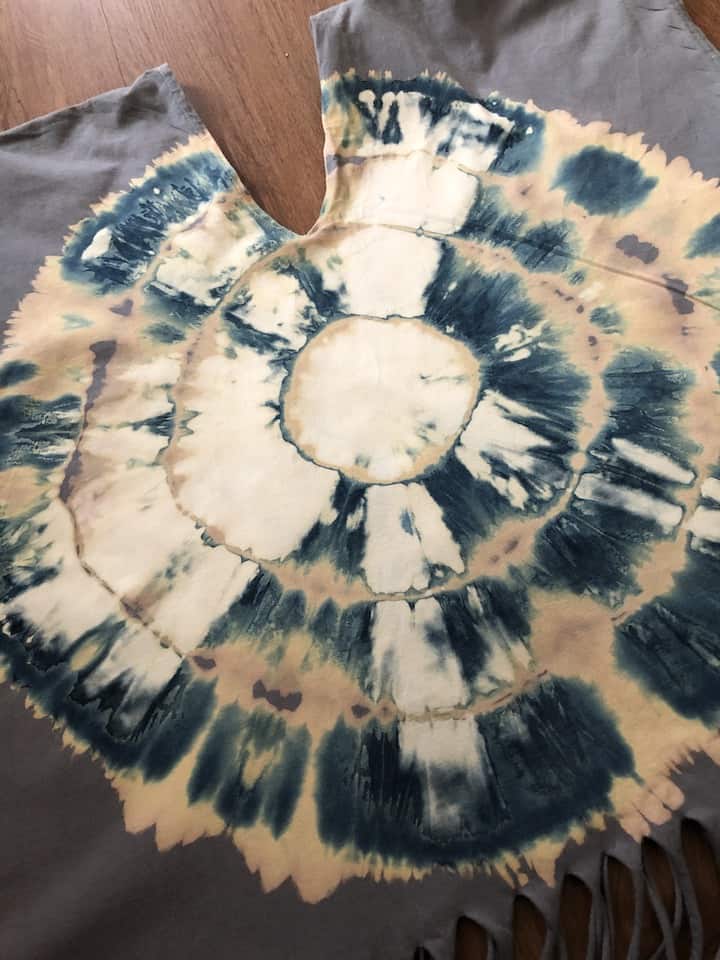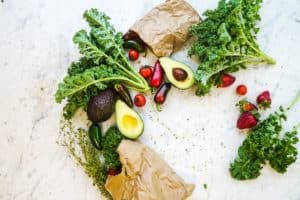Natural indigo tie dye is a long-standing tradition in the northern province of Sakon Nakhon, Thailand. The villages along the river have perfected this art over generations. They proudly continue indigo dyeing and the final product can be seen worn all throughout Thailand.
Disclaimer: This post contains affiliate links. If you decide to make a purchase using a link I may earn a commission at no extra cost to you.
You will see shops that carry these products in markets like Chatuchak Market in Bangkok. Popular clothing items include dresses, shirts, skirts, and pants. Sometimes instead of a tie-dye design, the thread will be dyed to be able to create woven patterns seen in traditional Thai women’s skirts.
Indigo Plant | Where the Natural Indigo Tie Dye Colors Come From
The indigo plant is actually a leafy green color that grows along the banks of the Songkhram River. In Thai, the plant is known as khram. This river flows through a specific area of the country. All of these small villages thrive off of this indigo dyeing process.

Cold Dyeing Process
To obtain this natural indigo dye, there is a complicated process that has been perfected and passed down through generations. The portions of this process must be exact or you will end up with a yellow-green color.
This is a very simple explanation from Studio Naenna of how the green plant is turned into a blue dye.
- Harvesting the indigo is done during the months of September and October, near the end of the rainy season.
- The stems are bundled together and put into a big bucket with water. This sits over a few days while heavy rocks are used to weigh the bundles down.
- After at least 24 hours, the water will turn a greenish color. The bundles of the plant are removed and can be used as fertilizer.
- The next step is to add a precise lime mixture. This step is key to changing the color to a beautiful blue. The solution must be mixed for 20 minutes for the oxidation process to develop. When it becomes frothy, you’ll know that it’s ready.
- At the bottom of the bucket is a paste that must be collected by straining the solution over a fine cloth.
- Over the course of a few days, more ingredients are added to the paste to create the dye.
- Once it’s finished, you can start making fabulous cotton designs.
How to Do Natural Tie Dye At Home
Now, since many of us don’t have indigo plants in our backyards, you can make natural dyes using vegetables and fruits.
To get started you’ll want to get a cotton piece of clothing and prep the fabric so that it holds the color. To do this, boil a pot of water mixed with salt. Add your fabric and make sure that all the fabric is covered by water. Occasionally stir and let this simmer for about one hour. When finished, rinse with cold water.
When making your colors, you’ll want to use a 4:1 ratio of water and food with a little bit of vinegar.
Colors:
- Purple – blueberries
- Gold/Yellow – turmeric
- Pink – beets
- Red – cherries
- Green – spinach
- Blue – red cabbage
- Peach – avocado skins and pit
With your fabric, you can use rubber bands to make a design. Boil the color and bring it to a simmer. Next, let the fabric sit in the color for at least an hour or overnight for a deeper hue.

Unveil Your Design
Ready for the unveiling?
Remember to use tongs when taking the fabric out of the colors as it will be hot!
Rinse the fabric with cold water and give it another salt water bath to make the colors really stick.
Hang up your design outside to dry.





Thanks for sharing I’ll see if we have this at home and we can experiment it here.
Great suggestions for how you can do it at home with food. Such an amazing way to get creative with what you already have and a fun experiment too x
Sophie